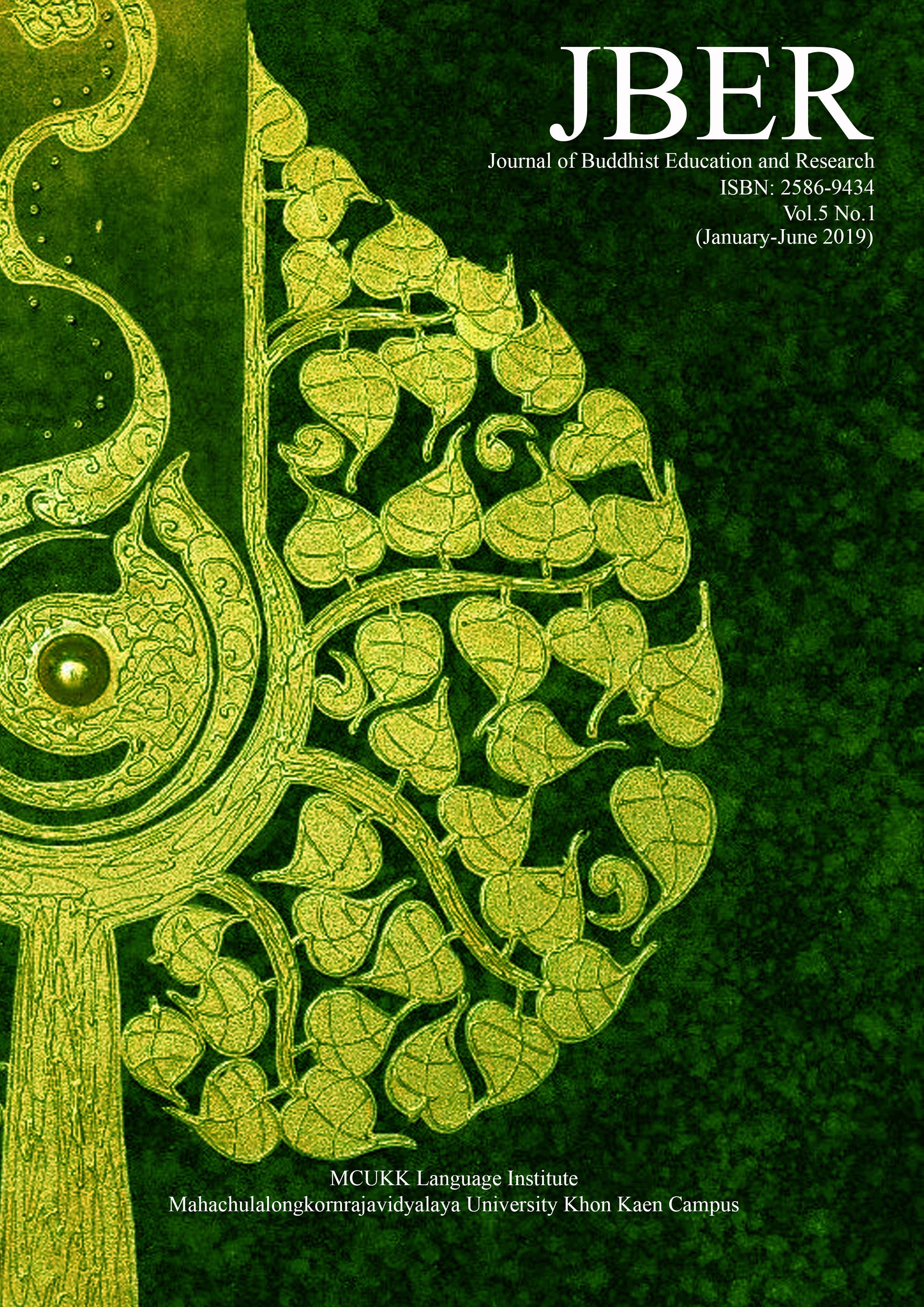Invisible Fetters, Round of Rebirth and its Way Out
Keywords:
Fetters, Invisible, Round of Rebirth, Saṃyojana, Way OutAbstract
This article aims to understand fetters in connection with round of rebirth and its way out. Fetters (saṃyojanas), a form of defilements or latent tendencies are innately ingrained over countless transmigration of all beings. They are regarded as the evil kingpin of the whole mass of round of existence. As chain of causes which result sentient beings infinite rebirth, they function closely related with the dependent origination (paticcasamuppāda).The fetters are regarded as invisible restraint device due to the fact that their special entity is they cannot be visible through naked eyes of human beings. Such device hooked permanently all sentient beings to the round of rebirth, and the realms of suffering. In Buddhism, the only way to overcome the cause of sufferings or to emancipate all beings from the Fetters is practicing according to the rudimentary Four Foundations of Mindfulness. This so-called the Supreme Paths are the particular doctrine practicing to abandon all the saṃyojanas. If members in a society were to abandon all of the fetters successfully, such society would become “Ideal society” is a society that is luminous shine with wisdom.References
Anuruddha, Ācariya. (2007) A Comprehensive Manual of Abhidhamma: The Abhidhammattha Sangaha. Venerable Mahāthera Nārada (tr.). Bhikkhu Bodhi, Allan R. Bomhard (eds.). Charleston Buddhist Fellowship: Charleston.
Bodhi, Bhikkhu (tr.). (2000). The Connected Discourses of the Buddha A New Translation of the Saṃyutta Nikāya. Vol. I. 2 vols. Set. PTS: Oxford.
Davids, T.W. and C.A.F. Rhys (trs.). (1921). Dialogues of the Buddha Translated from the Pali of the Dīgha Nikāya.Part III. Oxford University Press: London.
Hare, E.M. (tr.). (1978). The Book of the Gradual Sayings (Anguttara-Nikāya). Vol. IV (The Books of the Sevens, Eights and Nines. PTS: London.
Law, Bimala Charan (tr.). (2006). Designation of Human Types (Puggala-paññatti). PTS: Lancaster.
Mahatthanadull, Sanu. (2010). “The Analytical Study of Saṃyojana (Fetters) in Theravāda Buddhist Scriptures”. Master of Arts Thesis (Buddhist Studies) (Thai Version). Graduate School: Mahachulalongkornrajavidyalaya University.
Ñāṇamoli, Bhikkhu; Bodhi, Bhikku (trs.). (2001). The Middle Length Discourses of the Buddha A Translation of the Majjhima Nikāya. PTS: Oxford.
Thiṭṭila, Paṭhamakyaw Ashin (Seṭṭhila) Aggamahāpaṇḍita (tr.). (1995). The Book of Analysis (Vibhanga). PTS: Oxford.
Woodward, F.L. (tr.). (1972). The Book of the Gradual Sayings (Anguttara-Nikāya). Vol. V (The Book of the Tens and Elevens). PTS: London.
Bodhi, Bhikkhu (tr.). (2000). The Connected Discourses of the Buddha A New Translation of the Saṃyutta Nikāya. Vol. I. 2 vols. Set. PTS: Oxford.
Davids, T.W. and C.A.F. Rhys (trs.). (1921). Dialogues of the Buddha Translated from the Pali of the Dīgha Nikāya.Part III. Oxford University Press: London.
Hare, E.M. (tr.). (1978). The Book of the Gradual Sayings (Anguttara-Nikāya). Vol. IV (The Books of the Sevens, Eights and Nines. PTS: London.
Law, Bimala Charan (tr.). (2006). Designation of Human Types (Puggala-paññatti). PTS: Lancaster.
Mahatthanadull, Sanu. (2010). “The Analytical Study of Saṃyojana (Fetters) in Theravāda Buddhist Scriptures”. Master of Arts Thesis (Buddhist Studies) (Thai Version). Graduate School: Mahachulalongkornrajavidyalaya University.
Ñāṇamoli, Bhikkhu; Bodhi, Bhikku (trs.). (2001). The Middle Length Discourses of the Buddha A Translation of the Majjhima Nikāya. PTS: Oxford.
Thiṭṭila, Paṭhamakyaw Ashin (Seṭṭhila) Aggamahāpaṇḍita (tr.). (1995). The Book of Analysis (Vibhanga). PTS: Oxford.
Woodward, F.L. (tr.). (1972). The Book of the Gradual Sayings (Anguttara-Nikāya). Vol. V (The Book of the Tens and Elevens). PTS: London.
Downloads
Published
2019-06-27
How to Cite
Mahatthanadull, S. . (2019). Invisible Fetters, Round of Rebirth and its Way Out. Journal of Buddhist Education and Research (JBER), 5(1), 31–38. retrieved from https://so06.tci-thaijo.org/index.php/jber/article/view/243157
Issue
Section
Research Article





